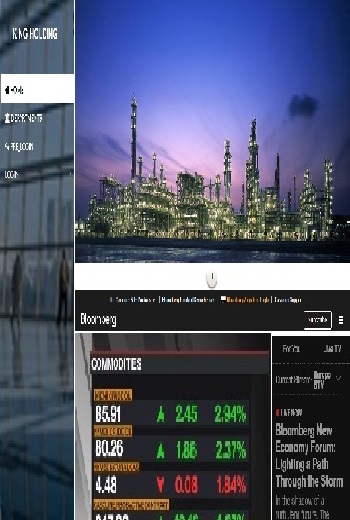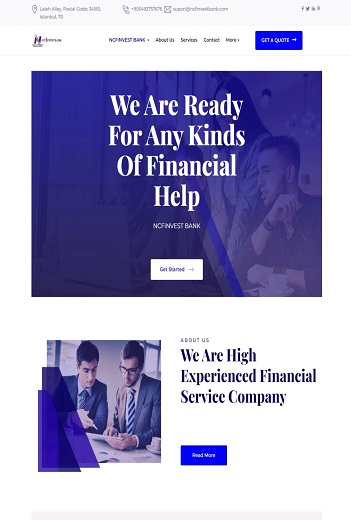What We Do
Alert:
Please read Pre-Applicants text carefully before order.
Please read Pre-Applicants text carefully before order.
- Design Engineering Management
- Project Management
- Estimating & Cost Management
- Customer Agreement Consulting
We perform an exact technical study for every project, overseeing them and managing a team of design engineers, ensuring realization, efficiency and smooth workflow.

Safety Management
Our design organization has a deep commitment to the health and safety of employees in the field and to safeguard the environment. Nafisa Team’s design expertise is evident.
Cost Management
The design-build method of executing major capital projects is increasingly being used to shorten delivery schedules and optimize capital as well as operations and maintenance costs.
Quality Management
Nafisa Team has a quality program; A quality manager is assigned to each project and is responsible for the implementation and coordination of the quality programme google.
We offers clients a complete solution to deliver their projects on-time and within budget. In addition, we offer clients a unique understanding of what can go wrong on a project.
Creating the Project Plan
Build the project schedule by listing, in order, all the tasks that must be completed. Some must be done sequentially while others can overlap or be done in tandem. Assign a duration to each task.
Manage Resources
A successful project manager must effectively manage the resources assigned to the project, including members of the project team, vendor staff, and subcontractors.
Access Scope
The project scope is the definition of what the project is supposed to accomplish and the budgets of time and money that have been created to achieve these objectives. Any change to the scope of the project must have a matching change in budget, time, resources, or all three.
- Identify all detailes.
- Confirm the availability.
- Determine the relationship among all those detailes.
- Perform them sequentially.
- Modeling and testing.
- Realize and observe in real world.
- Inquire customer's feedback.
- Fix all defects and deficiencies.
- Deliver and terminate the project.
As the design manager on a project, Nafisa Team estimates design cost carefully for every selected project to execute an excellence and commercial success.

Determining Requirements
The first real step in designing a project is a pre-design phase or planning phase. The pre-design phase involves defining a project’s requirements: what its function(s) will be, how much it should cost, where it will be located, and any legal requirements it must comply with.
Designing the Structure
The NafisaTeam's designer works first with the owner to decide on the broad strokes of the design and then increasingly closely with the other members of the design team to flesh out the structure’s design in accordance with requirements.
Bidding Based on the Scope
Along with these bidding documents, they include instructions on how to submit bids, a sample of the contract agreement, and financial and technical requirements for contractors.
Signing the Contract
The contract documents encompass the bidding documents, which now function as a legal contract between owner and contractor. Contracts can follow a number of models, depending on how complete the design is and how the owner and contractor bear risks.
Close-Out
When the Nafisa Team's designer comes close to finishing a design, the contractor requests the designer perform a substantial completion inspection in which the designer verifies the near-complete status of the project.
Project failure can happen to anybody—and to any project. A Standish CHAOS Chronicles report states that only 52% of completed projects meet their proposed functionality. The same study, based on more than 13,000 projects, reports that successful projects made up “just over a third or 34 percent of all projects”—meaning, the other two-thirds are failing. Another report on 9,236 design projects showed that project success rates have settled at a startling 28 percent.

Step 1—Defining the Charter
In this important first step you are attempting to identify and agree on a number of critical elements which will be included in the project charter. For example, you need to:
- Define the mission with the sponsor
- Understand the project history and sensitivities
- Establish initial project team contact
- Determine the assessment approach
- Complete the charter and obtain approval
Step 2—Developing the Assessment
Using this model, the RT model, will develop an assessment plan that:
- Is realistic and can be executed to achieve the charter's objectives
- Will allow for an assessment in as short a time as possible
- Will ensure that accurate findings are produced
- Will minimize project team distraction
Step 3—Conducting the Assessment
The RT is now ready to execute the Assessment Plan, which has three main areas of focus:
- Determining the true current status of the project
- Identifying the major threats, opportunities and problems for the project moving forward
- Establishing an extended team for the recovery effort
Step 4—Developing the Recovery Plan
Given the dynamics of the situation, the plan developed for a troubled project is not similar to a plan for a new project. There are many key differences, many of which are listed below. Simply put, a project plan for a troubled project:
- Must not fail.
- Will be subject to extraordinary scrutiny. The team must be ready to defend every action they take.
- Provides for broad fundamental changes in scope, schedule and cost.
- Is of shorter duration.
- Is subject to tighter monitoring and controlling.
- Requires greater frequency of communicating and reporting.
Step 5—Conducting the Recovery
At the end of each week, the inchstone plan will be updated and the RT will:
- Re-plan the next rolling 3-week period
- Examine variances by estimator
- Define or re-define workload for next period
- Obtain new estimates for the next period from estimator
- Acknowledge progress (team, sponsor, customer feedback) to build morale
The United Arab Emirates, Dubai
Our E-mails;
For Investors
For Subcontractor






